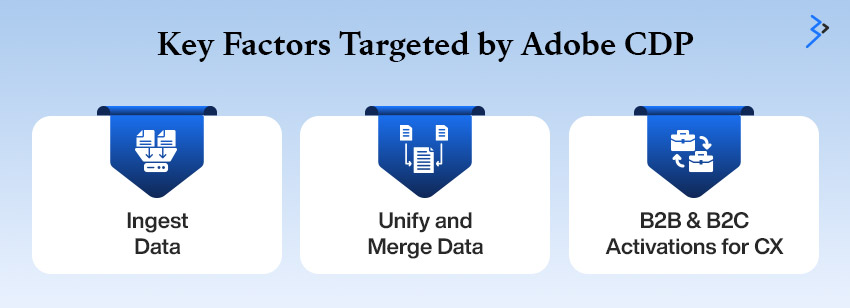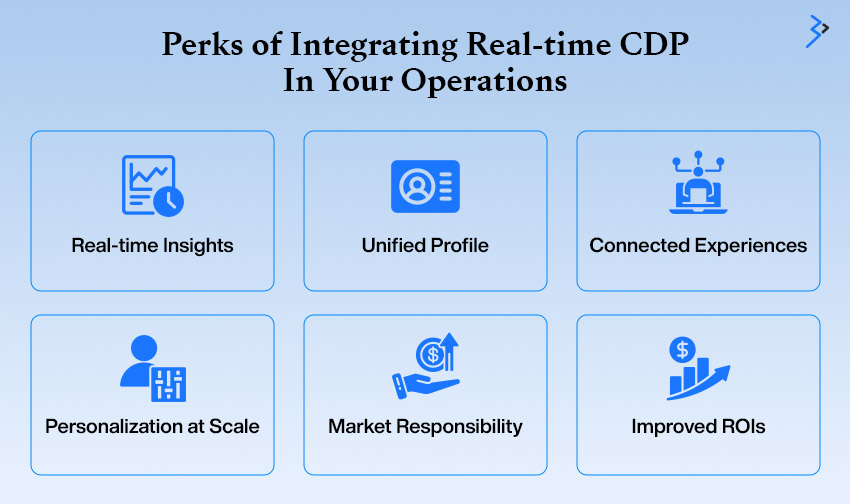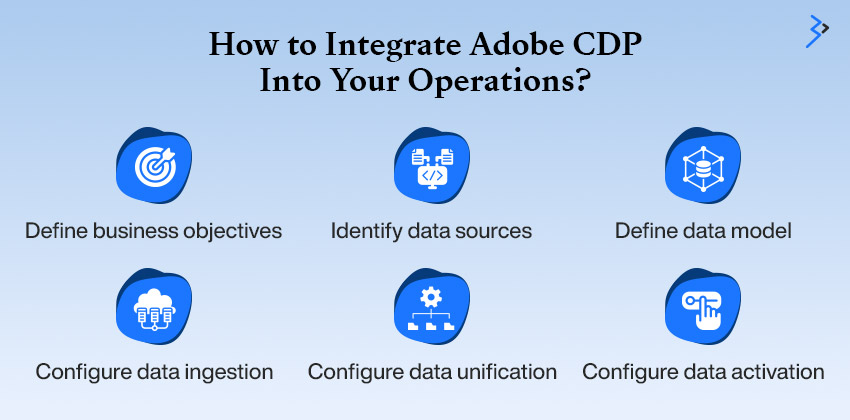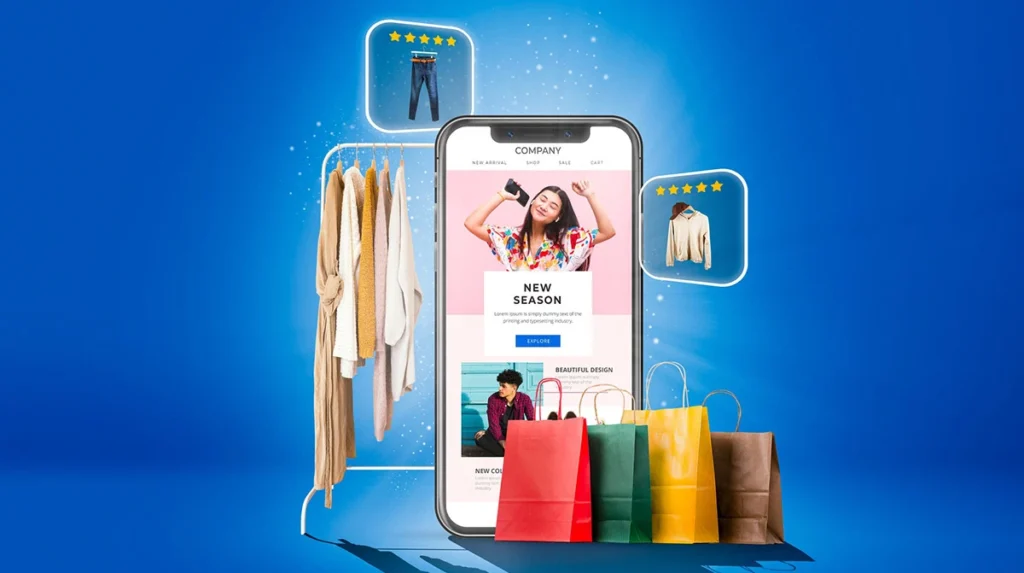Summary
Did you know? A customer interacts with brands at more than six touchpoints across different channels!
Yes, it’s true! Throughout their journey, customers expect a seamless and personalized experience that adds to their overall shopping experience. Sadly, however, that’s a brand’s biggest nightmare.
Most budding companies find it challenging to engage with customers across different touchpoints. Not to forget, the offline interactions that make a marketer’s job more complicated when planning to deliver compelling experiences across touchpoints.
The gaps between customer expectations and delivery have made it impossible to deliver seamless experiences that improve conversions.
So, what’s the solution for personalization at scale?
Enter Adobe Real-Time CDP, an insightful AI-powered Customer Data Platform (CDP) that helps simplify customer interactions and touchpoints across different platforms.
Therefore, this blog examines the different aspects of Adobe’s real-time customer data platform. So continue reading as we learn more about CDP in the following sections.
What is Adobe CDP? How Does it Simplify Marketing?
Adobe Real-time CDP, also known as Adobe Real-time Customer Data Platform, is a powerful customer data platform that allows marketers to quickly build real-time experiences across all touchpoints, connected devices, and channels by using real-time cross-channel audience data to construct customer profiles. This potent CDP, which is based on the Adobe Experience Manager Services Platform, has revolutionized how targeted and customized campaigns are run across channels to provide more secure, engaging, and informative outcomes for companies.
Adobe Real-time CDP Helps You:
- Obtain a unified, consolidated view of all the client data from different sources.
- Oversee client data’s privacy and security for known and unknown identifiers.
- Utilize Adobe Sensei-powered AI to comprehend audience behavioral activities.
- Wherever your audiences go, provide them a tailored CX in real-time.
It offers several capabilities to stay compliant and adhere to the relevant legislation or data governance standards, including data governance, data science, sophisticated segmentation, and identity management. Since Adobe Real-time CDP is an Adobe product, it can easily integrate with other Adobe Commerce Cloud Development Services, enabling flawless cross-channel customer interactions.
Key Factors Targeted by Adobe CDP

- Ingest Data
It first gathers and incorporates audience data from various first-party sources, including CRM systems, eCommerce online and mobile apps, point-of-sale systems, and more to obtain deep insights. It can handle massive amounts of data from many forms and sources and transform it into something useful.
- Unify and Merge Data
Various identity resolution strategies must be combined into a single real-time client profile. This facilitates the development of a cohesive picture of every target audience that includes specifics for targeted interaction.
- B2B & B2C Activations for CX
To close the gaps between marketing campaigns and customer expectations and offer a connected, consistent, targeted, and customized experience across devices, Adobe Real-time CDP activates audience insights across multiple channels, including apps, email, web, social media, mobile, and other advertising.
Unique Features of Adobe CDP

Access to Unified Platforms
Using customer data from all online and offline channels and touchpoints where customers engage with companies (both B2B and B2C), Adobe Real-time CDP assists in creating and integrating actionable customer profiles. Using individual real-time data helps companies better understand their consumers and accelerate time to market for increased engagement with every encounter.
Streamlined Audience Management
Adobe Real-time CDP provides enhanced capabilities of end-to-end audience management using intelligently segmented customer profiles in real-time. The integrated AI capabilities make real-time monitoring of shifting consumer behavior possible. They also allow building profiles, forecasting the probability of similar consumers, and offering more focused and targeted marketing that results in conversions. It increases the effect of connections and engagement by enabling suggestions based on comparable demographics, consumer behavioral factors, and profiles.

Cookieless Marketing
Cookies harm our health and don’t even help with today’s focused, individualized marketing objectives. According to a recent KPMG report, 68 percent of US customers are worried about how much data companies use third-party cookies to obtain. Indeed, cookie-based advertisements lack behavioral patterns and audience insights; in other words, the humanized experience is absent.
Based on the powerful Adobe Experience Platform, this Adobe Real-time CDP increases marketing efficacy across channels and funnels. Using advertising-focused integrations, it generates and targets audiences based on data-rich audience profiles. To maintain the scale of your marketing initiatives, it safely works with reliable partners and gathers audience insights and first-party data.
Governance of Data
Data Governance
Maintaining customer data became essential as audience data privacy concerns grew, as did security concerns with third-party cookies and massive amounts of data from several channels (online and offline). Additionally, companies found it challenging to handle data management when several compliances and laws, such as GDPR or Data Protection Laws, were introduced.
As a unified customer data management solution, Adobe Real-time CDP allows you to collect consent data, label data, enforce data usage, and comply with applicable laws. Before audiences are activated for campaigns, it also checks data sources and procedures to ensure they comply with the relevant regulations.
Audience Activation
With “in-the-moment” customization based on real-time audience data, Adobe Real-time CDP allows organizations to concentrate on a more focused customer experience (CX) across channels. It is simple to activate B2C and B2B audiences on Adobe and non-Adobe marketing platforms for increased engagement, loyalty, and return on investment (ROI) using AI, partner data, and use-case playbooks.
Data Collaboration
Finding and reaching high-value audiences for more meaningful interactions and engagements through tailored marketing while maintaining the highest level of privacy is possible through data collaboration with a trusted partner in a safe environment. This collaboration allows publishers and advertisers to reach these audiences through various channels and touchpoints and encourages fruitful interactions.
Perks of Integrating Real-time CDP In Your Operations

Adobe Real-time CDP enables companies to provide tailored and captivating experiences in real-time across many channels, touchpoints, and interactions. More specific information on its advantages for your company may be found in this section:
1. Real-time Insights
It provides real-time audience information to help you rethink your marketing plans and campaigns better to suit the needs and preferences of your target audience.
2. Unified Profile
It gathers information from various offline and online sources to segment and customize clients based on their expectations and creates customer profiles.
3. Connected Experiences
Adobe Real-time CDP was created to provide smooth customer journeys with real-time profiles, automated processes, and faster activations. It was created in response to the growing need for consistent experiences across touchpoints and many channels.
4. Personalization at Scale
It enables companies to satisfy every customer’s expectations while producing and delivering linked, personalized experiences at scale.
5. Market Responsibility
It puts the audience’s privacy and data security first and complies with local laws by enforcing use guidelines to maintain their faith in your company.
6. Improved ROIs
It assists companies in providing scalable, real-time, tailored experiences in a safe setting with the highest degree of customer pleasure, which boosts return on investment.
How to Integrate Adobe CDP Into Your Operations?

To implement Adobe RT-CDP, a few easy procedures must be followed. This is a quick tutorial on how to use the tool; the technical procedures are much more involved and require the help of qualified professionals. To implement the solution for your company, speak with one of our Adobe RT-CDP specialists.
1: Define business objectives
Goal: Make clear what Adobe RT-CDP is supposed to do. Determine the main objectives: Establish the precise results you hope to achieve, such as raising customer happiness, boosting marketing ROI, increasing customer engagement, or boosting sales.
Examples of use: Identify the prominent use cases to help accomplish these goals. RT-CDP, for instance, may be used to optimize inventory management, enhance customer service, and create tailored marketing campaigns.
Measurable goals: Set quantifiable, explicit goals for every aim. This might be enhancing email open rates, decreasing cart abandonment rates, or raising the average order value.
2: Identify data sources
Goal: Decide which data sources will supply the RT-CDP with information.
Internal sources: List all internal data sources, including point-of-sale systems, CRM development services, mobile apps, websites, and email marketing platforms.
External sources: Consider any outside data sources, such as demographic databases, social media platforms, and consumer surveys, that enhance customer profiles.
Data availability: Verify that the required data can be accessed from these sources and is current and correct.
3: Define the data model
Goal: Establish a framework for arranging the information gathered.
Customer attributes: Identify the essential characteristics that must be recorded for every client. This might include behavioral information (browsing history, purchasing history), preferences, and personal information (name, email).
Events: List the essential occurrences that must be monitored, including website visits, sales, cart abandonments, and email correspondence.
Interactions: Describe the kinds of interactions that will be captured, including those involving social media marketing services, customer support, and loyalty program activities.
Combined view: Create a single customer profile incorporating each component to give a thorough picture of every client.
Purpose: Create a structure for organizing the collected data.
4: Configure data ingestion
Goal: Configure procedures to gather information from selected sources and enter it into the RT-CDP.
APIs: Application programming interfaces (APIs) allow you to connect directly to data sources and stream data into the RT-CDP in real-time.
Bulk processing: Plan frequent bulk uploads for data sources that don’t provide real-time streaming. This entails gathering data regularly and forwarding it to the RT-CDP in large quantities.
Real-time streaming: Use real-time streaming to ensure that information is updated as events happen and as up-to-date as feasible.
5: Configure data unification
Goal: Linking information from several sources to provide a single, thorough consumer profile is the goal.
Identity resolution: Using algorithms, match and combine records from various data sources that belong to the same consumer. This might entail comparing phone numbers, email addresses, or other identifiers.
Profile stitching: Construct a single profile from fragmented data. For example, connect offline purchase history with internet browsing habits to obtain a comprehensive picture of client activity.
Data cleansing: To preserve accuracy and dependability in the unified profiles, make sure the data is precise, deduplicated, and standardized.
6: Configure data activation
Goal: Utilize the consolidated consumer data to motivate activities across several channels.
Personalized Campaigns: Configure systems to generate highly tailored marketing campaigns using client data. This might involve customized ads, individualized website content, and targeted emails.
Cross-channel Engagement: Ensure that all engagement platforms have access to consumer data. This will allow consistent and tailored customer interactions, whether using the internet, mobile app, in-store, or customer service.
Reporting and analytics: Use analytics and reporting to obtain insights from the unified customer data, which will aid in strategy refinement and ongoing customer interaction improvement.
Stay Ahead of Trends With Adobe CDP
The eCommerce sector keeps innovating and introducing technologies for smooth customer journeys with linked experiences to meet its customers’ constantly changing demands. eCommerce marketers and specialists are responsible for using the right technology and adapting their campaign marketing methods for their target audience.
Adobe Real-time CDP is designed to increase engagement, boost conversion rates, increase ROIs, and provide a tailored experience at scale. To enable and use this cutting-edge platform for their future, eCommerce brands and other companies that want to succeed today and remain relevant to their clients and sectors should seek an Adobe Real-time CDP services partner.
Related Articles
-
How to Set Up an Adobe Commerce Store: A Step-by-Step Guide
Summary Setting up an online store is your first step towards the entrepreneurial journey. You’re filled with ideas and want to execute everything to ensure the best for your customers.
-
Unlocking Operational Insights with an AI Assistant in Adobe Experience Platform
Designed as a generative AI tool, the AI Assistant in Adobe Experience Platform will transform how consumers interact with Adobe Experience Cloud apps like Adobe Customer Journey Analytics, Adobe Real-Time
-
What is the Navigation in Adobe Experience Manager (AEM)?
Summary Delivering a seamless user experience is crucial for evolving businesses! Today, more than ever, customers are inclined towards the look and feel of a website before trusting the brand.




